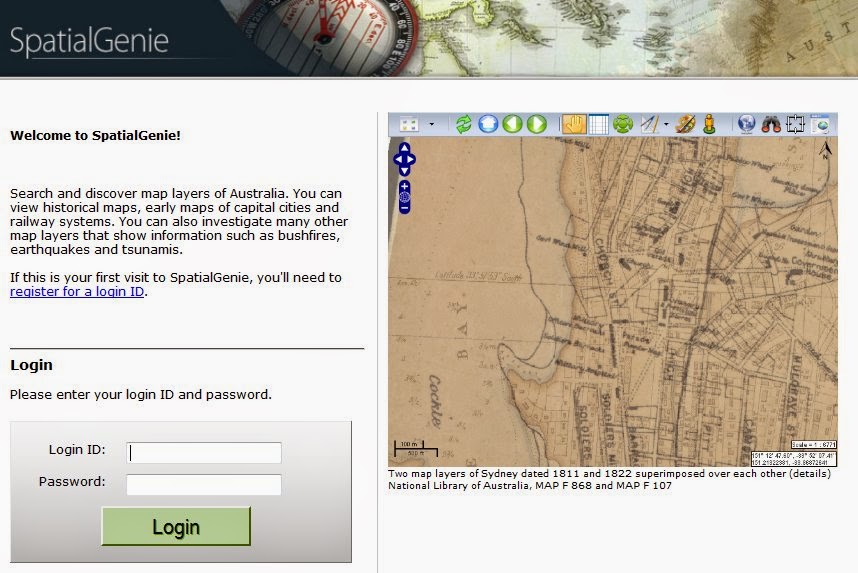

Left image: Working on GIS with geography teachers at the high school in Madang (learning AEJEE program to get started). One computer in the school and no Internet - a different education setting. Throw in a data projector and GIS can happen for classes. Hope to get one to the school next year to make it happen.
Right image: Daily market in Madang; smells, taste and life.
Related sites to the Spatialworlds project
Spatialworlds website
21st Century Geography Google Group
Australian Geography Teachers' Association website
'Towards a National Geography Curriculum' project website
Geography Teachers' Association of South Australia website
Email contact
manning@chariot.net.au
Where am I??
Adelaide, Australia: S: 34º 55' E: 138º 36'
Spatial applications is what it is all about!
When talking about spatial matters we often speak about spatial technology and applications. As mentioned in a previous posting there are some concise descriptions of spatial technology; but what is meant by the expression spatial applications? After searching for a concise definition of spatial applications I found the actual definition is quite fuzzy but for our purposes we can suggest that:
“Spatial applications refer to the use of spatial technology, skills and techniques to address a ‘real world’ issue, problem or phenomena. Another way of looking at it could be the applying of spatial tools, techniques and analysis to a wide range of environmental phenomena and human pursuits.”
Probably the best way to demonstrate what is meant by spatial applications is to showcase a range of uses of spatial technology.
“Spatial information is found within applications as diverse as ambulance dispatch services; bushfire management; and commercial asset mapping - these are all core business for the SI industry.”
In this posting I am going to profile several Internet sites which demonstrate powerfully the application of spatial technology. In fact, the reason most of us who are so keen to get spatial technologies, such as GIS, into schools is not just for students to play with the technological tool. Rather, we see the potential of spatial technology to apply the use of the technology, as an inquiry and/or problem solving tool, to various issues, problems and phenomena which they come across in their everyday life and study. As a result, it can be used in geography, science,
history and many other learning areas as a tool to enhance learning. Here are some applications via the CSRI SI, ESRI and GIS Zone sites.
1 The Cooperative Research Centre for Spatial Information (CSR SI)is a joint Australian venture of government, academic and private sector organisations using spatial technologies to solve complex problems of national significance. The site showcases the use of spatial technology for:
* Bike recreation
* Decision making and planning
* Disaster response i.e. Chrischurch example
* Health care
* Climate change impacts
* Mining
* Environmental mapping i.e turtles
* State planning
The site also contains some excellent videos on:
* Geospatial Industry
* Spatial and Government
* Spatial and Security
* Spatial and the world
2. The ESRI Australia site also profiles a diverse list of spatial application from bushfire management, cemetery mapping, local council asset management to cultural sensitive mapping
A few other ESRI sites also are useful to show the limitless application of spatial technology in our society
* Crime mapping
* Spatial applications case studies
*Law enforcement
*Industries using GIS
*Geotech
3. GIS Zone
This is a great site from the UK Ordnance Survey for students to get an understanding of the application of spatial technology to floods, shopping, wind power, ambulance services, farming and crime. Created as missions, this is by far the best “student friendly” site around to drive the point home in regards to spatial applications. The site is also supported with teacher notes and other GIS resources/knowledge for students.
4. GIS career sites
Sometimes the best way to show application is to profile those who work in the spatial industry. Here are several sites which may be useful to “join the dots” on this topic.
http://edcommunity.esri.com/im/videos/
http://geoinfo.sdsu.edu/hightech/GISCareerLinks_li.htm
http://gislounge.com/gis-career-resources/
Whilst talking about careers and spatial industry it is worth looking at the Surveying & Spatial Sciences Institute’s site.
The site gives a worthwhile insight into the industry applications of the technology.
I hope this posting has highlighted that the use of spatial technology in schools is more than playing with the tool. The focus in schools should be on the application of the tool for meaningful inquiry and/or problem solving as well as students being aware and proficient in the use of the technology. Only then can we truly justify the expense, teacher time and curriculum placement we require to integrate spatial technology in the classroom.
As the draft Australian Curriculum: Geography says:
“The unit provides the opportunity for students to use their geographical thinking, skills and technological tools to examine some environmental challenges that will affect their future lives, and to find out how geography contributes to the understanding and management of these challenges. Students are to recognise the value of spatial technology as a tool in geographical inquiry and in a wide range of practical applications”










